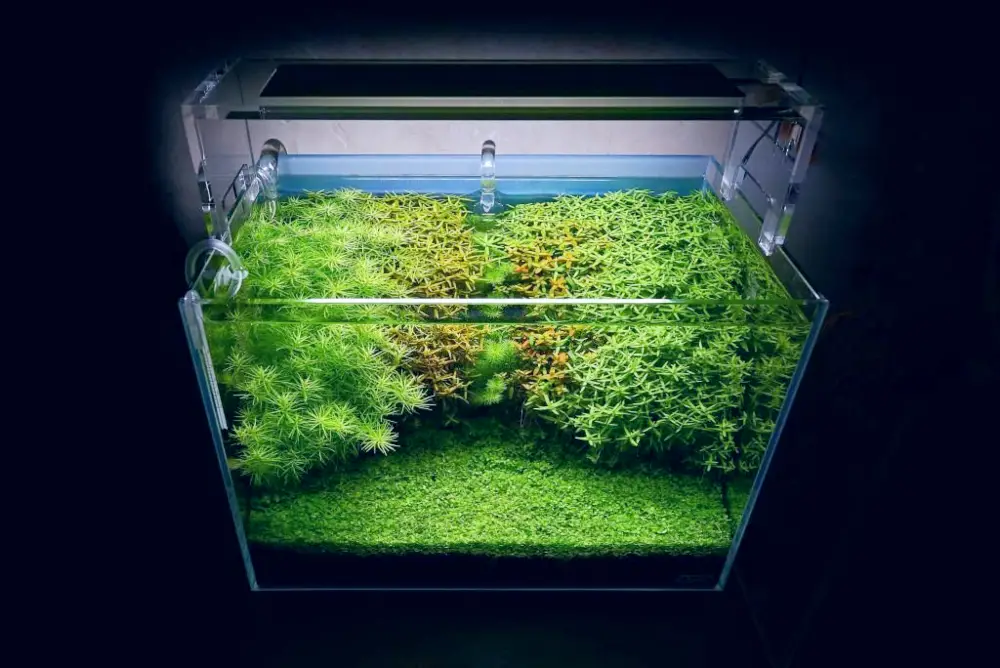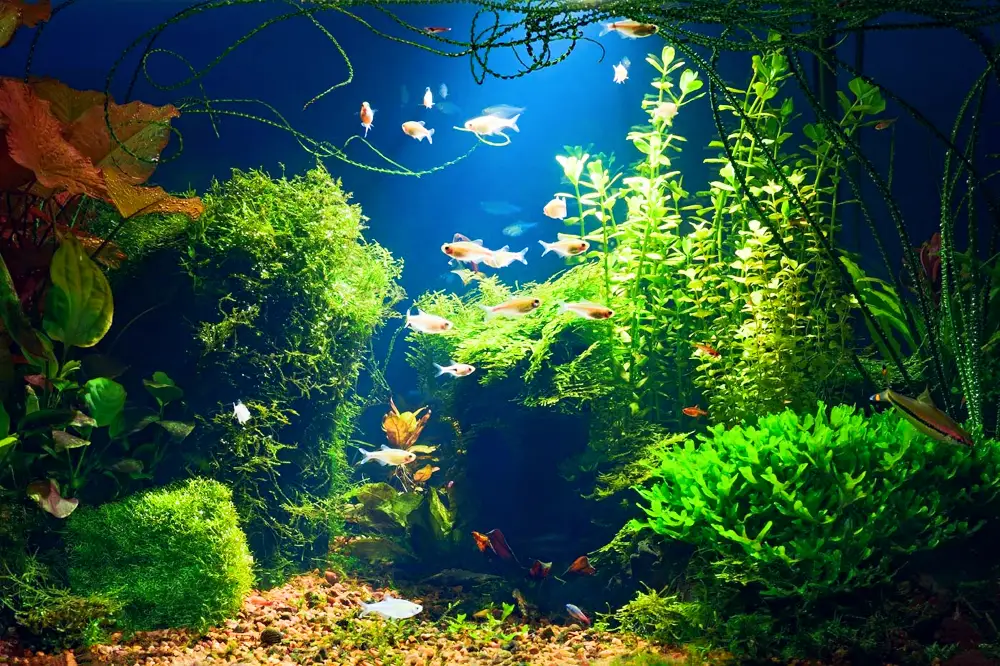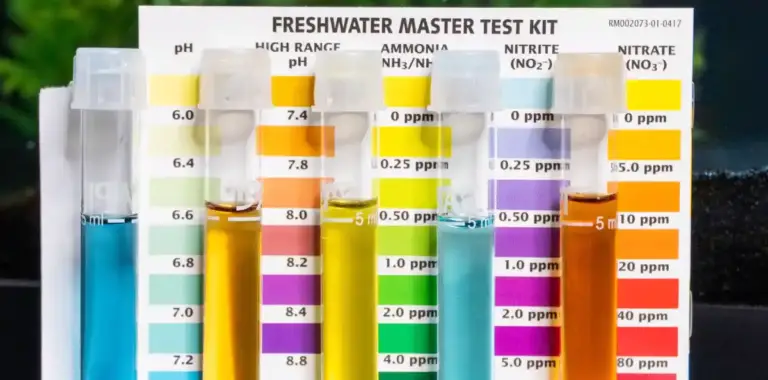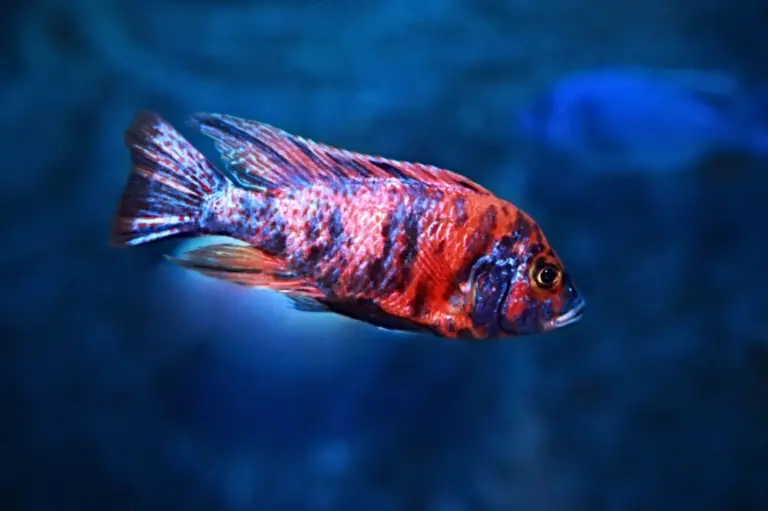Aquarium Lighting 101: An Easy Guide to Brightening Your Freshwater Tank
As a fish-keeping beginner, you’ve embarked on an exciting journey into the underwater world of vibrant colors and fascinating aquatic life. And what better way to enhance the beauty of your freshwater tank than with the right aquarium lighting?
In this beginner’s guide to aquarium lighting, we’ll illuminate the path for you, shedding light on everything you need to know about freshwater tank lighting. From understanding the benefits of proper lighting to selecting the right fixtures for your setup, we’ve got you covered.
Get ready to dive into the mesmerizing world of aquarium lighting and transform your freshwater tank into a radiant oasis for your fish.
Understanding the Basics of Aquarium Lighting

Proper aquarium lighting is more than just a way to brighten up your freshwater tank — it plays a crucial role in the health and well-being of your aquatic ecosystem. Let’s shed some light on the importance of aquarium lighting.
Firstly, light is essential for photosynthesis, the process by which aquatic plants convert light energy into oxygen and vital nutrients. Adequate lighting ensures that your plants receive the energy they need to grow and thrive, contributing to a balanced and visually appealing tank — while oxygenating your aquarium.
Secondly, lighting affects fish behavior. Just like us, fish have natural day-night cycles. The right lighting can help regulate their internal clocks and promote natural behaviors, reducing stress and enhancing their overall well-being.
By understanding the basics of aquarium lighting, you’ll be better equipped to create a vibrant and healthy environment for your fish and plants. Let’s explore the exciting world of freshwater tank lighting together!
Different Types of Aquarium Lighting
When it comes to lighting up your freshwater tank, there are a few options to choose from. Let’s explore the different types of aquarium lighting and their pros and cons:
- Incandescent lighting: This traditional type of lighting uses a heated filament to produce light. Incandescent bulbs are readily available and affordable, making them a common choice for beginners. However, they tend to generate more heat, consume more energy, and have a shorter life span compared to other options.
- Fluorescent lighting: Fluorescent lights are popular in the aquarium hobby due to their energy efficiency and versatility. They come in different lengths and spectrums, providing a range of lighting options for your freshwater tank. Fluorescent bulbs produce less heat and have a longer life span than incandescent bulbs, but they may require periodic bulb replacement.
- LED lighting: Light emitting diode (LED) lights have revolutionized aquarium lighting with their energy efficiency, longevity, and customization options. LED lights come in various colors and intensities, allowing you to create stunning visual effects and mimic natural lighting conditions. They produce minimal heat, consume less energy, and have a significantly longer life span compared to other types of lighting. However, they can be more expensive upfront.
Consider your budget, the needs of your fish and plants, and your desired lighting effects when choosing the right type of aquarium lighting for your freshwater tank. Each option has its advantages and drawbacks, so weigh them carefully to create a well-lit and visually captivating underwater world.
Selecting the Right Lighting Setup for Your Tank
When it comes to aquarium lighting, choosing the right setup is essential to create an optimal environment for your fish and plants. Let’s dive into the process of selecting the perfect lighting for your freshwater tank.
Start by assessing the specific needs of your fish and plants. Some species require higher light intensity for proper growth, while others thrive in lower light conditions. Understanding these requirements will help you determine the appropriate lighting setup for your tank.
Consider the concept of watts per gallon (WPG). WPG is a traditional method used to estimate the amount of light needed for a tank based on its size. While it’s less accurate than newer lighting metrics, it can serve as a starting point for beginners. Generally, a range of 1.5 to 3 WPG is suitable for most freshwater setups.
To measure your tank size, multiply the length, width, and height of your aquarium. Then, calculate the ideal wattage by multiplying the tank volume by the desired WPG range. For example, a 20-gallon tank with a desired WPG of 2 would require around 40 watts of lighting.
Remember, these calculations are just guidelines, and other factors like the type of plants, tank depth, and personal preference should also be considered.
By carefully assessing the needs of your fish and plants, understanding the concept of WPG, and calculating the ideal wattage, you can confidently select the right lighting setup for your freshwater tank.
Setting Up Your Aquarium Lights

Now, let’s dive into the exciting process of setting them up in your freshwater tank. Follow these instructions to ensure a safe and effective installation.
Start by carefully reading the manufacturer’s instructions provided with your lights. This will give you specific guidance on how to handle and install them correctly. Safety should always come first, so make sure to unplug any electrical connections before beginning the setup.
Positioning your lights is crucial for even coverage and to avoid creating glare or shadow areas. Aim for a balance between providing sufficient light to the entire tank and preventing excessive brightness. Mount the lights securely above the aquarium, ensuring they are protected from water splashes.
Common mistakes during the setup process can be easily avoided. One frequent error is placing the lights too close to the water surface, which can lead to overheating or even harm the fish. Another mistake is not considering the growth of plants over time, resulting in insufficient light as they reach higher levels.
To prevent these issues, maintain a safe distance between the lights and the water surface, and anticipate the growth of plants when positioning the lights initially. Regularly monitor and adjust the light intensity as needed, especially if you notice any signs of stress in your fish or plant life.
Maintenance and Troubleshooting
To keep your lights in optimal condition and maintain a vibrant environment for your fish and plants, regular maintenance is key. Let’s explore some important aspects of maintenance and troubleshooting to ensure your lighting setup continues to shine:
- Cleaning: Regular cleaning is essential to prevent dust and algae buildup on your light fixtures. Use a soft cloth or sponge to gently wipe away any dirt or grime. Avoid using harsh chemicals or abrasive materials that could damage the lights or affect the water quality. Clean the fixtures at least once a month, or more frequently if needed.
- Algae growth: Algae can be a common challenge with aquarium lights. To prevent algae buildup, ensure your tank is properly balanced with adequate filtration and light duration. If algae do appear, gently scrub the affected areas with a soft brush or algae scraper. Consider reducing the lighting duration or using a timer to establish a consistent lighting schedule that discourages algae growth.
- Common issues: Flickering lights, burnt-out bulbs, or light degradation can occasionally occur. Flickering lights may indicate loose connections or a faulty power source. Check the connections and replace any damaged or worn-out components. If a bulb burns out, replace it promptly to maintain proper lighting conditions. Different types of lights have varying life spans, so refer to the manufacturer’s guidelines to determine when replacement is necessary.
- Lighting life span: Understanding the life span of your lights is important for maintaining their effectiveness. Incandescent bulbs typically last around 1,000 hours, while fluorescent and LED lights can last much longer — up to 10,000 hours or more. Keep track of the usage time and consider replacing the lights when they reach the end of their life span to ensure consistent brightness and color rendition.
By following these maintenance tips and addressing common lighting issues promptly, you’ll ensure that your freshwater tank remains beautifully illuminated and that your fish and plants thrive under optimal lighting conditions.
Enhancing the Visual Appeal with Lighting Effects
In addition to providing essential illumination for your freshwater tank, aquarium lighting can also be a creative tool to enhance the visual appeal of your aquatic paradise. Let’s explore some exciting lighting effects that can take your tank to the next level!
Adding a moonlight effect creates a captivating atmosphere, simulating the natural nighttime conditions for your fish. Moonlight LED fixtures or blue-tinted lights can be used to mimic the gentle glow of moonlight, creating a serene and tranquil ambiance in your tank.
Using dimmers and timers allows you to create stunning sunrise and sunset effects. Mimic is the gradual change of light intensity by gradually increasing or decreasing the brightness over a specific period of time. This gentle transition not only adds a realistic touch but also provides a soothing experience for your fish.
To create a dynamic and vibrant tank, consider utilizing colored lights and adjustable settings. LED lights with customizable color options allow you to experiment with different hues, creating a visually stunning display. Adjust the intensity and color temperature to highlight specific areas or showcase the natural colors of your plants and fish.
By incorporating these lighting effects, you can transform your freshwater tank into a mesmerizing and visually captivating oasis. Remember to consider the specific needs of your fish and plants when implementing these effects, ensuring a harmonious and stress-free environment. Get creative and have fun exploring the possibilities of aquarium lighting!
Check out how KaveMan Aquatics set up their new aquarium lights — The Blade Freshwater Aquarium Light by AI:
Master the Art of Aquarium Lighting With KaveMan Aquatics Coaching
Congratulations! You’ve now mastered the art of aquarium lighting through our beginner’s guide to freshwater tank lighting. By understanding the basics, selecting the right setup, setting up your lights, maintaining them, and even exploring creative lighting effects, you’re well on your way to creating a vibrant and captivating underwater world for your fish.
Remember, proper lighting is crucial for the health and well-being of your aquatic inhabitants. So, put your newfound knowledge into action and brighten up your tank with confidence. Your fish will thank you for it!
If you ever need personalized guidance or have specific questions about aquarium lighting, don’t hesitate to reach out to KaveMan Aquatics. We offer 1-on-1 coaching services to help you take your fish-keeping skills to the next level.
Now, go forth and illuminate your freshwater tank, creating a stunning display that both you and your fish will enjoy for years to come!
Aquarium Lighting 101: An Easy Guide to Brightening Your Freshwater Tank
Discover the secrets of aquarium lighting in our beginner’s guide to freshwater tank lighting. Learn how to brighten your tank with proper lighting.







